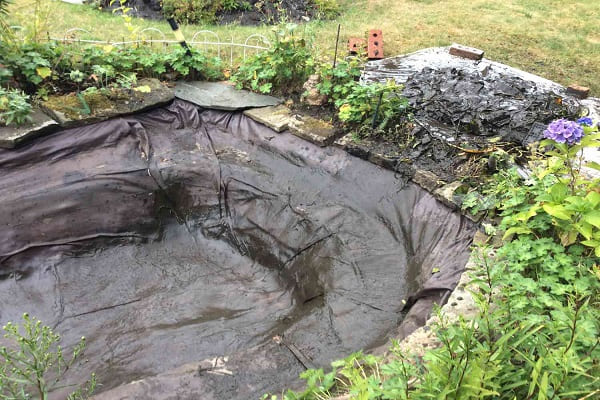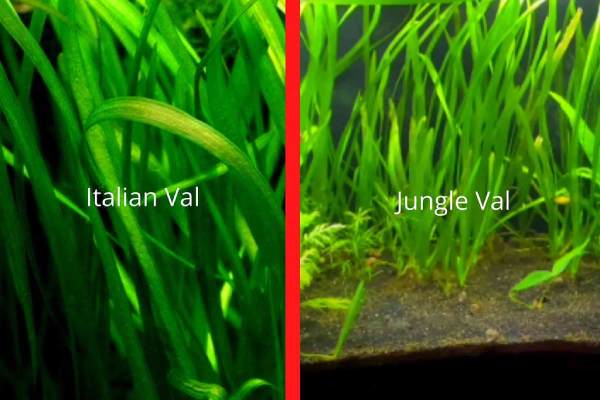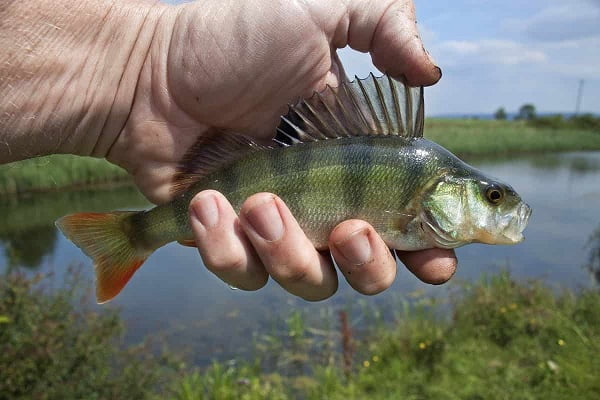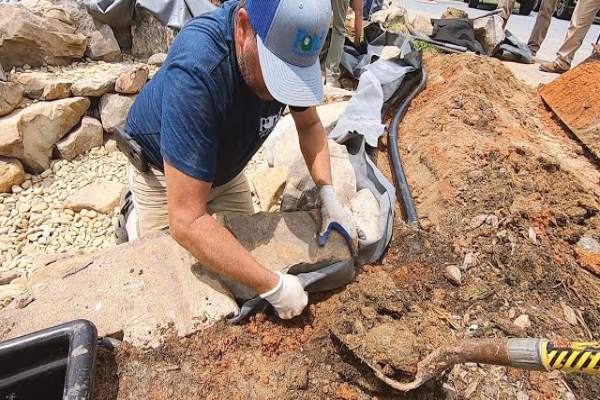Alternatives To Pond Liner: 12 Best Substitutes
Are you tired of patching up your pond liner after it breaks or tears and needs alternatives to pond liner? Is a solution that will stand the test of time something you’re looking for?
If yes, then keep reading because we’ve compiled a list of the 12 best alternatives to pond liners, perfect substitute for you to consider.
You know, years ago, liners made of PVC or rubber were the norm, but there are now many more durable materials to choose from. Thinking of what to use instead of pond liner? Read on to learn about these alternative options.
To enable you to make an informed decision and have a pond that doesn’t leak for years to come, we’ll go over the benefits and drawbacks of each of the alternative pond liners as well.
The Best Alternatives To Pond Liner
Now, here are the 12 best cheap alternatives to pond liners; perfect substitute.
Fiberglass
Fiberglass is a popular alternative to traditional pond liners due to its resilience and lifespan.
Fiberglass liners can survive for decades before they need to be replaced, but liners made of PVC or rubber must be replaced much more frequently.
The layers of fiberglass liners are bonded together with a resin coating. The thickness of the liner varies from 0.25 inches to 0.5 inches.
Also, fiberglass liners can withstand extreme temperatures, which is one of their primary benefits. They are resistant to ultraviolet light and can stop harmful algae and bacteria from growing in the pond.
Fiberglass liners don’t need frequent repairs or replacement and are simple to set up and maintain.
However, fiberglass liners are more expensive and must be installed by an expert to ensure a tight fit and watertight seal.
Flexible Polypropylene (FPP)
FPP is manufactured from superior materials and comes in a range of thicknesses to accommodate a wide variety of pond designs. The liner’s thickness ranges from 0.5mil to 2 mils. It has a longer lifespan than other pond liners, at up to 25 years.
FPP can tolerate both high temperatures and UV rays, making it perfect for the construction of ponds in warmer regions.
If your pond has an unusual shape, FPP is your best option because it can easily be molded into your desired shape.
That’s not all, FPP also has great puncture resistance, so it won’t leak and will last for a very long time.
Despite the fact that FPP has a higher initial cost, its durability and efficiency make it a great choice for any pond.
Reinforced Polyethylene (RPE)
The next on our list of 12 best pond liners alternatives is reinforced polyethylene (RPE).
Because of reinforced polyethylene’s (RPE) longevity, resistance to punctures, and overall toughness, it is a great material for pond liners.
They range in thickness from 20 mils to 45 mils, so you can choose the best option for your pond’s size and level of protection.
Despite their durability and low maintenance needs, RPE liners might be more expensive to install than other pond liners. The inflexibility of RPE makes it more challenging to install in ponds with unusual forms.
Low-density Polyethylene (LLDPE)
Low-density polyethylene (LLDPE) is another versatile and long-lasting material that you can use as a pond liner. It can last for up to 20 years without deteriorating.
You know, liners with a higher wall thickness are more resistant to tears and punctures, and LLDPE is one of them, with a thickness ranging from 20 mils to 60 mils.
Just like FPP, it’s also a fantastic option for you if your pond has an unusual shape because it can be shaped to fit the pond’s exact dimensions.
Unfortunately, this liner is expensive to install, as installing it properly calls for specialized training and equipment.
High-density Polyethylene (HDPE)
HDPE liners are constructed from high-density polyethylene resin, making them durable and adaptable.
HDPE is not like the traditional liners you have been using, it is a durable choice that can last for up to 25 years without degrading.
Its thickness ranges from 30 mils to 100 mils, making it strong and durable for your pond.
HDPE is a great material for ponds that will be subjected to chemicals or other harsh substances because of its high level of chemical resistance.
However, if you have a pond that has an unusual shape, using High-density polyethylene (HDPE) is not advisable because it isn’t flexible.
Tarp
Tarp is another quality alternative. The most common types are polyethylene and polypropylene. As pond liners, these materials are perfect because of their low weight, adaptability, and durability against tears.
The normal thickness of a polyethylene tarp is 6–8 mils, while a polypropylene tarp can range from 4–12 mils. The amount and weight of the water in your pond will determine how thick the tarp needs to be.
Another good thing about this pond liner is the fact that you can find it in virtually any size or shape, so you can make a pond that is tailor-made for your yard.
In addition, tarps are portable and easy to store and transport because they’re lightweight and flexible.
But they have a shorter lifespan than typical pond liners, lasting about 5–10 years, and are easily destroyed by rocks and other sharp items in the pond because they are not as puncture-resistant as other liners.
Concrete
Due to its strength and longevity, concrete has become a preferred substitute for traditional pond liners. Typically, cement, sand, and water are combined to form a concrete pond. The concrete wall must be as thick as necessary to support the pond’s volume and weight in water.
It’s impervious to the damaging effects of extreme temperatures and precipitation. It can also withstand jagged rocks and other pond debris without being damaged.
If you construct and maintain concrete properly, it can last for over 20 years. However, in warmer areas, concrete ponds can be more challenging to maintain because of rapid algae growth.
Natural Clay Liner
If you need a pond liner but don’t want to spend a fortune, consider using natural clay.
They are available in a transparent polyethylene material that showcases your pond’s natural beauty.
Natural clay is very economical and can last for 5-10 years, depending on how well you maintain it.
Natural clay liners also have the benefit of being environmentally friendly. They are built of safe materials that won’t disrupt your pond’s ecosystem or the fish and other aquatic life within it. They need low-maintenance and are simple to install compared to other liner choices.
However, in severely cold temperatures, they may become more fragile.
EPDM (ethylene propylene diene)
If you are in search of a pond liner that is resistant to wear and tear, EPDM is a perfect option. These liners are resistant to wear and tear from even the most severe climate conditions.
Also, EPDM liners are available in thicknesses between 30 and 45 mils. With care and maintenance, they can last for more than 30 years.
EPDM liners are resistant to high temperatures and won’t melt or crack even if you expose them to high temperatures. They can also withstand the ozone and other pollutants found in ponds without being damaged.
PVC (polyvinyl chloride)
The 10th on our list of the 12 best alternatives to pond liners is PVC. These liners are constructed from synthetic materials that are resistant to tears and punctures.
The good thing about this liner is that it comes in a wide range of styles, colors, and patterns to suit your pond’s size and design scheme.
Another reason you should choose this liner is because it has a lifespan of more than 20 years if properly installed and maintained. Their thickness usually ranges from 20 to 40 mils.
However, they may leak toxic chemicals into the pond over time and aren’t as eco-friendly as other choices.
Tarpaulin
Tarpaulin is another substitute for conventional pond liners, particularly for ponds of smaller size. Tarpaulin is an inexpensive alternative to other pond liners, and it may be used to create a pond in a short period of time.
Tarpaulin is preferable if your pond has an irregular shape because it can be easily trimmed to fit. In addition, tarpaulin comes in a wide range of widths and thicknesses.
But it is susceptible to punctures and tears because it is not as tough as other materials. If your pond has sharp things like rocks or sticks, this could become a serious issue.
Tarpaulin is also susceptible to faster degradation in sunlight because it is not as UV resistant as other pond liners.
Butyl
Butyl is a form of synthetic rubber known for its durability and strength and is frequently used as a pond liner.
It can be shaped to accommodate uniquely shaped ponds or ponds of any other irregular shape. Butyl is also resistant to the sun’s ultraviolet rays.
It is not only resistant to ultraviolet light, but also to punctures and extreme temperatures, making it a durable material for your pond.
If you’re looking for a pond liner alternative that can stand the test of time, then butyl is all you need. Butyl is not easily cracked or shrunken by extreme temperature changes.
However, butyl is more costly than most alternatives, making it less convenient. Also, butyl can easily be torn or punctured by sharp rocks or other debris on the bottom of your pond.
Conclusion
Now that we’ve explored the 12 best alternatives to pond liners in detail, you should be armed with a wealth of information to help you choose a pond liner and build the pond of your dreams.
Whether you need a pond liner that is resistant to high temperatures, simple to set up and keep in good condition, or cheap, there is a substitute liner available that can serve your purposes.
Keep in mind that there are benefits and drawbacks to each liner type before making a final decision and you can as well check out how to fill in a pond.
FAQs
Liquid Rubber can be used to prevent water from seeping into your pond since it is highly elastic and can withstand water for extended periods of time.
A liner is essential for every pond because it prevents water from escaping through the bottom.
If the proper material and installation method are used, a pond liner can last for more than 30 years.





![How To Fix Pond Liner To Wood [Step-By-Step Guide]](https://pondmemo.com/wp-content/uploads/2023/05/how-to-fix-pond-liner-to-wood-1_img-min.jpg)
